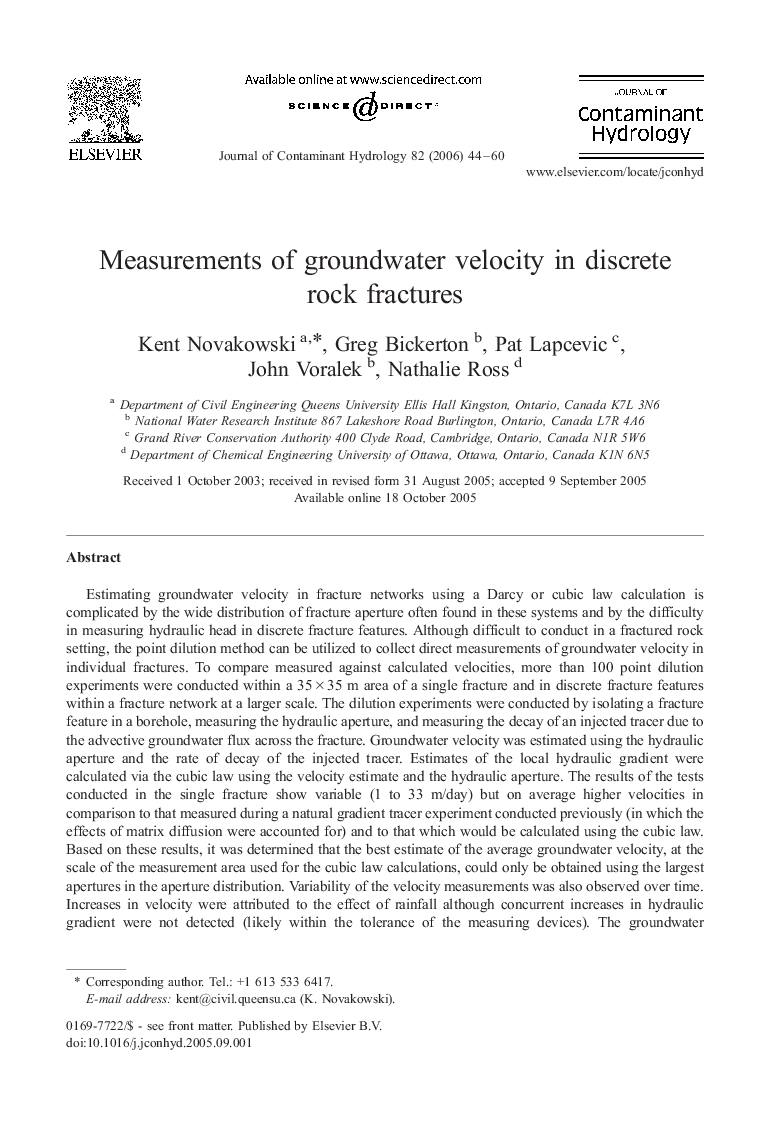| کد مقاله | کد نشریه | سال انتشار | مقاله انگلیسی | نسخه تمام متن |
|---|---|---|---|---|
| 4547783 | 1627143 | 2006 | 17 صفحه PDF | دانلود رایگان |

Estimating groundwater velocity in fracture networks using a Darcy or cubic law calculation is complicated by the wide distribution of fracture aperture often found in these systems and by the difficulty in measuring hydraulic head in discrete fracture features. Although difficult to conduct in a fractured rock setting, the point dilution method can be utilized to collect direct measurements of groundwater velocity in individual fractures. To compare measured against calculated velocities, more than 100 point dilution experiments were conducted within a 35 × 35 m area of a single fracture and in discrete fracture features within a fracture network at a larger scale. The dilution experiments were conducted by isolating a fracture feature in a borehole, measuring the hydraulic aperture, and measuring the decay of an injected tracer due to the advective groundwater flux across the fracture. Groundwater velocity was estimated using the hydraulic aperture and the rate of decay of the injected tracer. Estimates of the local hydraulic gradient were calculated via the cubic law using the velocity estimate and the hydraulic aperture. The results of the tests conducted in the single fracture show variable (1 to 33 m/day) but on average higher velocities in comparison to that measured during a natural gradient tracer experiment conducted previously (in which the effects of matrix diffusion were accounted for) and to that which would be calculated using the cubic law. Based on these results, it was determined that the best estimate of the average groundwater velocity, at the scale of the measurement area used for the cubic law calculations, could only be obtained using the largest apertures in the aperture distribution. Variability of the velocity measurements was also observed over time. Increases in velocity were attributed to the effect of rainfall although concurrent increases in hydraulic gradient were not detected (likely within the tolerance of the measuring devices). The groundwater velocities measured in the fracture network varied over a wider range than at the scale of the single fracture (from 2 to 388 m/day). No correlation, however, was observed between the size of the fracture aperture and measured velocity.
Journal: Journal of Contaminant Hydrology - Volume 82, Issues 1–2, 5 January 2006, Pages 44–60